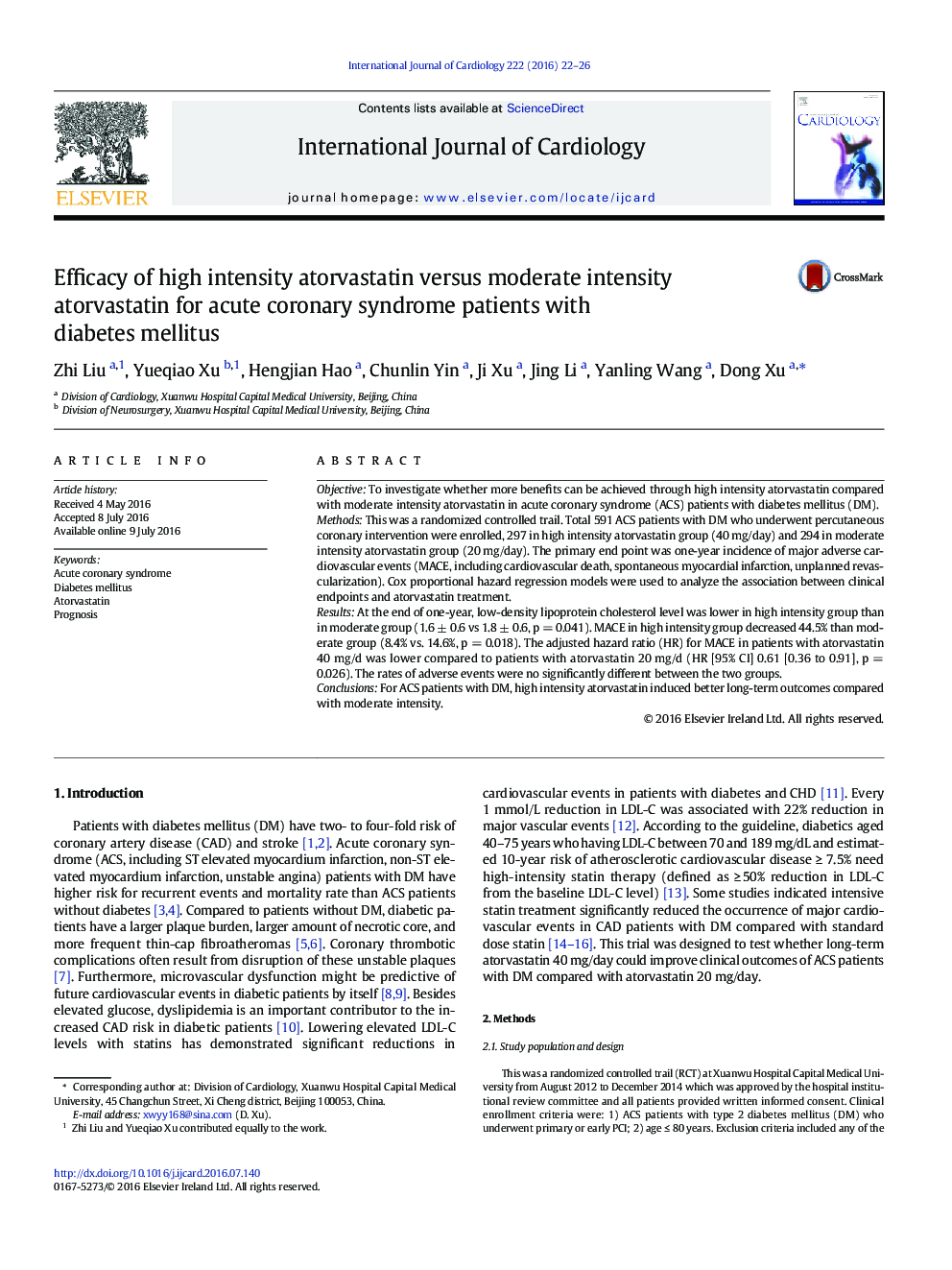| Article ID | Journal | Published Year | Pages | File Type |
|---|---|---|---|---|
| 5962582 | International Journal of Cardiology | 2016 | 5 Pages |
ObjectiveTo investigate whether more benefits can be achieved through high intensity atorvastatin compared with moderate intensity atorvastatin in acute coronary syndrome (ACS) patients with diabetes mellitus (DM).MethodsThis was a randomized controlled trail. Total 591 ACS patients with DM who underwent percutaneous coronary intervention were enrolled, 297 in high intensity atorvastatin group (40 mg/day) and 294 in moderate intensity atorvastatin group (20 mg/day). The primary end point was one-year incidence of major adverse cardiovascular events (MACE, including cardiovascular death, spontaneous myocardial infarction, unplanned revascularization). Cox proportional hazard regression models were used to analyze the association between clinical endpoints and atorvastatin treatment.ResultsAt the end of one-year, low-density lipoprotein cholesterol level was lower in high intensity group than in moderate group (1.6 ± 0.6 vs 1.8 ± 0.6, p = 0.041). MACE in high intensity group decreased 44.5% than moderate group (8.4% vs. 14.6%, p = 0.018). The adjusted hazard ratio (HR) for MACE in patients with atorvastatin 40 mg/d was lower compared to patients with atorvastatin 20 mg/d (HR [95% CI] 0.61 [0.36 to 0.91], p = 0.026). The rates of adverse events were no significantly different between the two groups.ConclusionsFor ACS patients with DM, high intensity atorvastatin induced better long-term outcomes compared with moderate intensity.
